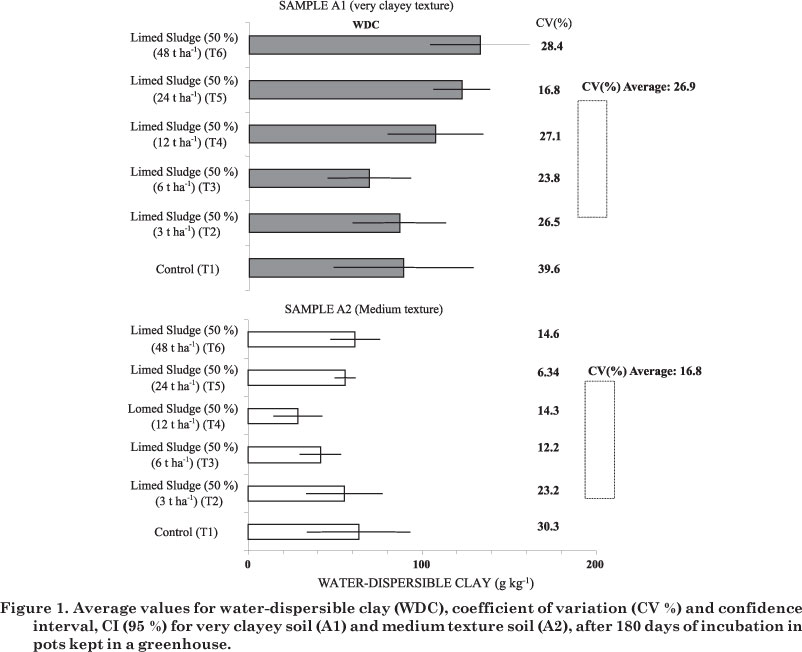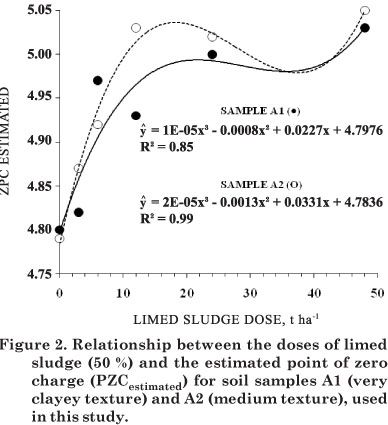A by-product of Wastewater Treatment Stations is sewage sludge. By treatment and processing, the sludge is made suitable for rational and environmentally safe use in agriculture. The aim of this study was to assess the influence of different doses of limed sewage sludge (50 %) on clay dispersion in soil samples with different textures (clayey and medium). The study was conducted with soil samples collected from native forest, on a Red Latosol (Brazilian classification: Latossolo Vermelho distroférrico) loamy soil in Londrina (PR) and a Red-Yellow Latosol (BC: Latossolo Vermelho-Amarelo distrófico) medium texture soil in Jaguapitã (PR). Pots were filled with 3 kg of air-dried fine earth and kept in greenhouse. The experiment was arranged in a randomized block design with six treatments: T1 control, and treatments with limed sewage sludge (50 %) as follows: T2 (3 t ha-1), T3 (6 t ha-1), T4 (12 t ha-1), T5 (24 t ha-1) and T6 (48 t ha-1) and five replications. The incubation time was 180 days. At the end of this period, the pots were opened and two sub-samples per treatment collected to determine pH-H2O, pH KCl (1 mol L-1), organic matter content, water-dispersible clay, ΔpH (pH KCl - pH-H2O) and estimated PZC (point of zero charge): PZC = 2 pH KCl - pH-H2O, as well as the mineralogy of the clay fraction, determined by X ray diffraction. The results showed no significant difference in the average values for water-dispersible clay between the control and the other treatments for the two soil samples studied and ΔpH was the variable that correlated best with water-dispersible clay in both soils.
biosolids; flocculation; PZC; ΔpH; organic matter






